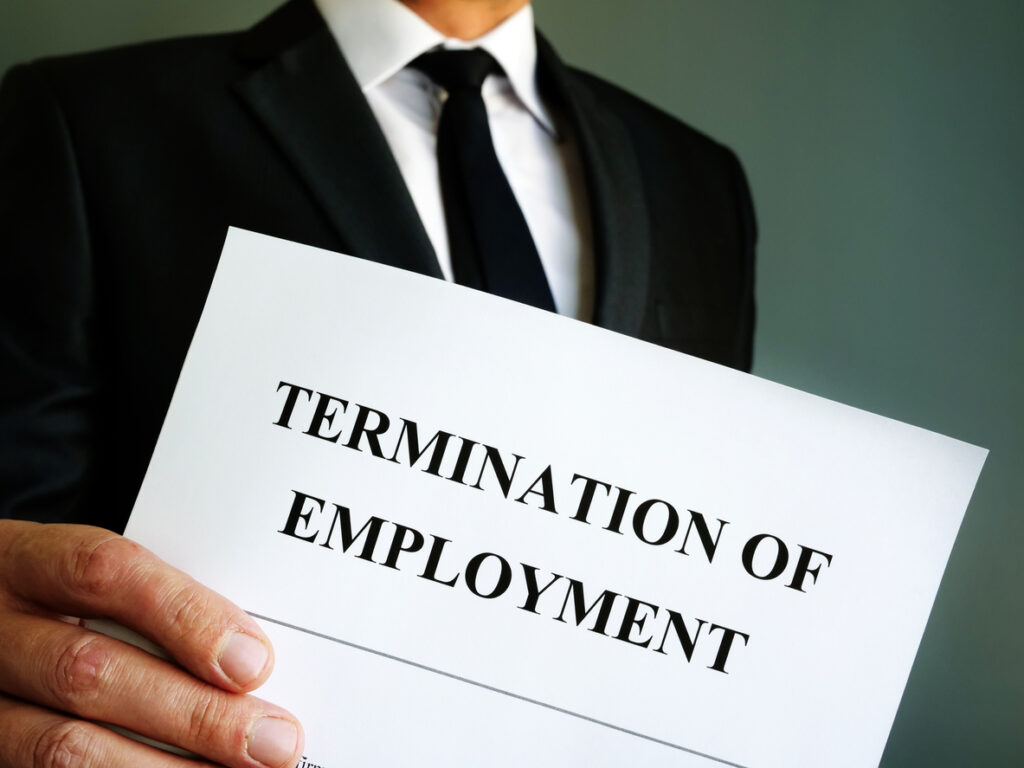- 2 Nov 2025

Being wrongfully terminated can feel like a personal and professional earthquake—one that shakes your confidence and complicates your future career prospects. The path forward is rarely linear. For many, Finding Job after Wrongful termination becomes a process filled with self-doubt, confusion, and uncertainty. However, the way you handle the job search after such a setback can either help you rebuild stronger or keep you stuck in a cycle of missed opportunities.
Unfortunately, many individuals unintentionally sabotage their chances during this critical period. From misrepresenting past employment to emotionally reacting in interviews, the road is littered with missteps. In this detailed guide, we’ll explore the most common—and damaging—mistakes to avoid when you’re Finding Job after Wrongful termination, so you can move forward with clarity, dignity, and confidence.
Hiding the Truth Instead of Framing It Professionally
One of the most damaging mistakes you can make when Finding Job after Wrongful termination is trying to bury or distort the truth. Whether it’s omitting the job entirely from your resume or spinning an inaccurate story, this approach often backfires. Background checks are common, and employers can usually detect inconsistencies in your narrative.
Instead of hiding the termination, focus on framing it in a neutral, professional manner. Avoid casting blame, and instead, acknowledge the event briefly before redirecting attention to your qualifications and future goals. Integrity and poise go a long way in building trust during interviews.
Letting Emotions Drive Your Responses
Understandably, being terminated unfairly stirs up a whirlwind of emotions—anger, resentment, shame, and anxiety. But allowing those feelings to surface during interviews or in networking conversations can significantly harm your chances. Speaking negatively about former employers, becoming defensive, or appearing bitter makes hiring managers wary.
When you’re Finding Job after Wrongful termination, it’s crucial to rehearse your explanation calmly and constructively. Keep the conversation focused on what you’ve learned, how you’ve grown, and why you’re ready to move forward. Interviews are not therapy sessions—they’re opportunities to demonstrate your resilience and professionalism.

Failing to Address Employment Gaps Strategically
Gaps in your employment history can raise red flags, especially when they follow a sudden termination. While you don’t need to go into exhaustive detail about what happened, it’s a mistake to ignore or awkwardly gloss over the break in work. Doing so can make interviewers more suspicious.
A smarter approach is to reframe the gap as a period of growth. If you took time to learn new skills, volunteer, or reassess your career goals, mention that. Aligning this time with productive efforts shows initiative. The key to Finding Job after Wrongful termination is turning every obstacle into a stepping stone.
Using the Same Resume for Every Application
Another critical mistake is using a generic resume for every opportunity. After a wrongful termination, you need to be especially intentional in how you present your professional story. A cookie-cutter resume won’t do justice to your journey, strengths, or career pivot.
Customize your resume for each job. Emphasize the value you delivered in past roles, highlight transferable skills, and tailor your objective to fit the role you’re pursuing. When you’re actively Finding Job after Wrongful termination, targeted applications yield far better results than mass distribution.
Not Preparing a Strong Personal Narrative
Many job seekers fail to craft a compelling, consistent personal narrative after losing a job unfairly. Without a coherent explanation, they tend to ramble, contradict themselves, or appear evasive during interviews. This creates confusion and undermines credibility.
A strong personal narrative should clearly connect your past experiences with your present qualifications and your future goals. It should position your termination as a professional event, not a personal failure. This is especially important in Finding Job after Wrongful termination, where your ability to regain control of the story can make or break your success.
Skipping Networking Out of Embarrassment
Losing a job under questionable circumstances can feel isolating, leading many people to withdraw from professional networks. This is a critical mistake. Personal connections remain one of the most powerful job search tools available—especially when you’re trying to overcome a negative employment event.
Instead of retreating, lean into your network. Reach out to former colleagues, mentors, and friends who can vouch for your character and skills. Often, Finding Job after Wrongful termination becomes much easier when others are willing to provide warm referrals or advocate on your behalf.
Applying Without Clarifying Your Legal Status
If your wrongful termination is part of an ongoing legal process, it’s essential to be cautious about how you discuss it. Oversharing or speaking negatively about your former employer could not only harm your job prospects but also jeopardize your case. Conversely, not mentioning anything in roles that demand transparency could hurt your credibility.
When relevant, and only when asked directly, you can offer a concise, neutral summary of the situation. If you’re unsure about what to disclose and how, reviewing a resource like this guide on employment search after termination can help you manage Finding Job after Wrongful termination with both discretion and honesty.
Ignoring the Power of Upskilling
A surprisingly common mistake is failing to invest in professional development during unemployment. Many assume that time alone will heal their career setbacks. But in today’s competitive market, simply waiting doesn’t improve your employability—learning does.
Taking online courses, gaining certifications, or even attending webinars can reenergize your resume and provide fresh talking points during interviews. If you’re Finding Job after Wrongful termination, upskilling shows that you’re committed to self-improvement and prepared for your next challenge.
Neglecting Mental Health and Self-Confidence
Job loss—especially when unjust—takes a toll on your mental health. One of the biggest mistakes you can make is ignoring this reality. Depression, anxiety, and low self-esteem are common side effects that, if left unaddressed, can derail your job search efforts.
Investing in therapy, journaling, exercise, or other forms of self-care isn’t indulgent—it’s essential. Confidence impacts everything from your interview tone to your body language. To succeed in Finding Job after Wrongful termination, you must first believe in your value.

Disregarding How You Present Online
Your digital presence speaks volumes. Yet many candidates overlook outdated LinkedIn profiles, unprofessional social media content, or incomplete digital footprints. This is a major error, especially if you’re trying to pivot or recover from a tough employment situation.
Update your LinkedIn with fresh, relevant content. Remove any negative or polarizing posts from other platforms. Consider sharing insightful articles or reflections to rebuild your image as a thoughtful, forward-thinking professional. When Finding Job after Wrongful termination, every piece of your public image should reinforce your readiness for the next opportunity.
Not Leveraging Government Resources
Many professionals overlook the robust tools and services offered by government agencies. Whether it’s job boards, unemployment assistance, or career counseling, these resources exist to help people bounce back from employment challenges.
For example, the U.S. Department of Labor provides guidance on worker rights, career services, and job search strategies. Leveraging such resources can give you a strategic advantage when you’re Finding Job after Wrongful termination and navigating the complex world of employment recovery.
Accepting the First Offer Out of Fear
Job insecurity often drives people to accept the first offer they receive—regardless of whether the role fits their skills, career path, or values. But rushing into a job that doesn’t align with your goals can result in another unhappy exit.
Take the time to evaluate each offer. Consider growth potential, culture fit, compensation, and stability. While it’s important not to drag out your job search indefinitely, Finding Job after Wrongful termination should ultimately lead you to a better, not just faster, opportunity.

Overlooking Emotional Preparation for Interviews
Even if you’ve prepared your answers and polished your resume, entering an interview still requires emotional readiness. Many candidates overlook the mental and emotional energy needed to present their best selves. Showing up tense, distracted, or defensive can undermine even the most qualified candidate.
Before interviews, center yourself. Visualize success, breathe deeply, and remind yourself of your achievements. Finding Job after Wrongful termination is as much a mental game as it is a logistical one. Poise and positivity leave lasting impressions.
Closing the Door on Temporary or Freelance Work
Lastly, a major mistake is assuming that only full-time roles matter. Temporary contracts, freelance gigs, or consulting work not only fill employment gaps—they also show resourcefulness and adaptability. They can even lead to long-term opportunities.
So if your ideal job hasn’t materialized yet, consider project-based work to maintain momentum. While Finding Job after Wrongful termination, small wins can build into big ones.
Conclusion
Navigating the job market after a wrongful termination is complex, emotionally charged, and sometimes overwhelming. But by identifying and avoiding the most common mistakes, you can regain control over your career trajectory. From reframing your story to strengthening your digital presence and seeking support, every action you take shapes your professional comeback.
Finding Job after Wrongful termination is not a dead end—it’s a redirection. Avoiding these mistakes ensures that your next chapter is built on strength, clarity, and purpose.
Recent posts
- 17 Oct 2025
Categories
- Accident & Injury Law (54)
- AI (1)
- Copyright Law (1)
- Criminal & Civil Law (17)
- Disability Law (2)
- Driving Law (2)
- Employment Law (1)
- Estate Planning (2)
- Family & Relationship Law (29)
- Food and Drink (2)
- Gas Exposure (1)
- Health (1)
- Immigration Law (2)
- Injury Claim (1)
- Insurance Law (7)
- Legal (40)
- Lemon Law (4)
- Mediation (3)
- Medical Malpractice (1)
- Property & Business Law (9)
- Severance Agreement (1)
- Travel and Leisure (1)
- Uncategorized (12)
- Worker Compensation (2)

